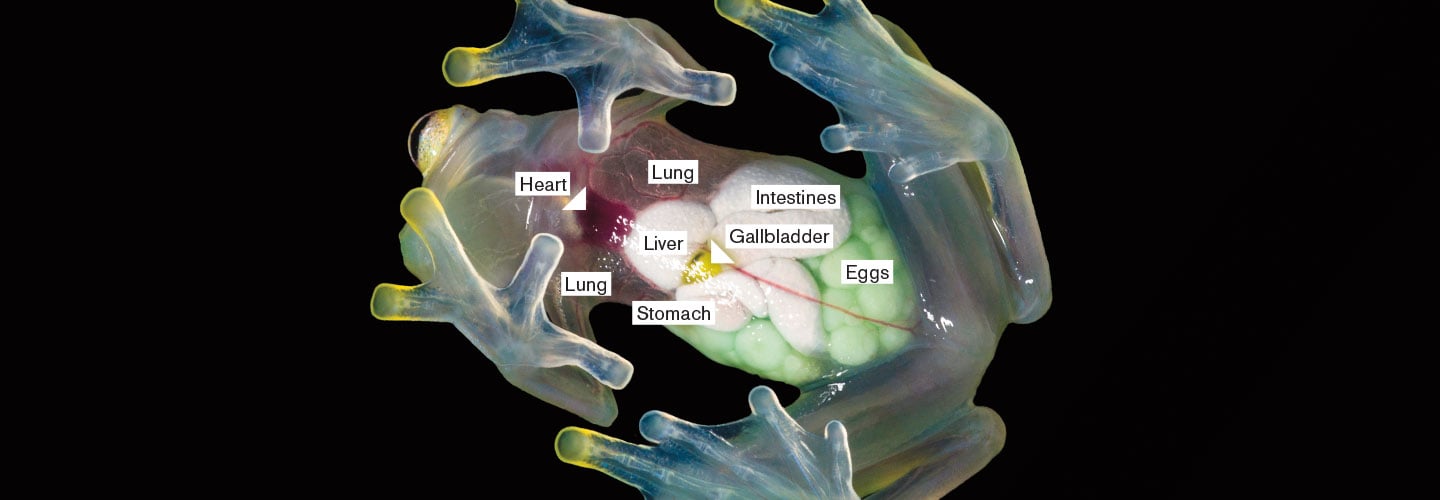There’s no doubting that this frog has guts. That’s because you can see them! A glass frog’s heart, intestines, and lungs are visible right through its belly. Glass frogs are so named because looking at them from underneath is like looking through glass.
More than 150 species of glass frogs live in the tropical rainforests of Central and South America. Most have green skin—except for on their abdomens. This area of their body lacks pigmentation, or color. Some scientists believe this strange adaptation might help the frogs camouflage themselves to stay hidden from predators, says Santiago Castroviejo-Fisher. He’s a biologist at the American Museum of Natural History in New York City.

